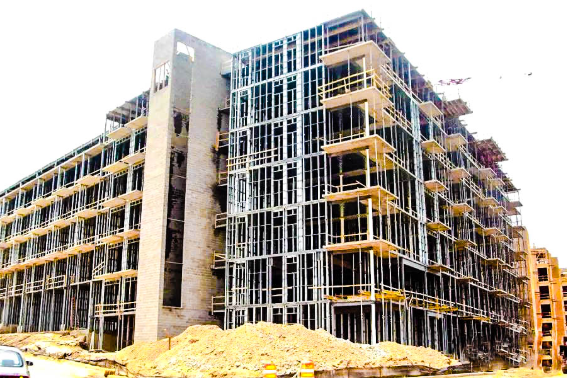Steel Structure Factories

Steel structure factories primarily refer to industrial buildings whose main load-bearing components are constructed from steel materials. These include steel columns, steel beams, steel foundations, steel roof trusses, steel roofing systems, and—optionally—brick walls for cladding. With the significant increase in China’s steel production, many industries have begun adopting steel structure factories, including heavy-duty steel structures. Industrial and civil buildings constructed with steel are collectively referred to as steel structures.
Characteristics of Steel Structure Factories
Lightweight, High Strength, Large Span: Steel structures offer lightweight designs with exceptional load-bearing capacity and the ability to span large distances.
Short Construction Period, Lower Costs: Steel structures enable faster construction, reducing investment costs.
Poor Fire Resistance and Corrosion Vulnerability: Steel structures are less fire-resistant and prone to corrosion, making them unsuitable for extremely cold climates.
Ease of Relocation and Recyclability: Steel structures can be easily dismantled and recycled without causing environmental pollution.
Performance of Steel Structure Factories
Seismic Resistance: Low-rise villas typically feature sloped roofs constructed with cold-formed steel members forming triangular roof truss systems. After enclosing structural panels and gypsum boards, these systems create a robust "ribbed slab structure," significantly enhancing seismic resistance and horizontal load-bearing capacity. Such designs are suitable for regions with seismic intensity zones above 8 degrees.
Wind Resistance: Steel structures are lightweight, high-strength, and rigid, offering strong deformation resistance. Their self-weight is only one-fifth that of brick-concrete structures, enabling them to withstand hurricanes up to 70 meters per second, thereby safeguarding lives and property.
Durability: Steel residential structures employ cold-formed thin-walled steel components made from super-corrosion-resistant, high-strength galvanized steel plates. This effectively prevents rust during construction and use, extending the service life of steel components to up to 100 years.
Sound Insulation: Sound insulation is critical in residential evaluation. Steel-framed windows use double-glazed glass for noise reduction (over 40 dB), while walls composed of steel stud frames and gypsum board insulation achieve sound insulation levels as high as 60 dB.
Environmental Friendliness: Steel materials are 100% recyclable, ensuring true green and pollution-free construction.
Advantages of Steel Structure Factories
Steel structures harmonize with nature, contributing significantly to the construction industry by enhancing aesthetics, durability, and safety while protecting lives and property. Their popularity stems from numerous advantages, such as:
Factory Prefabrication: Components are manufactured off-site, reducing on-site work, shortening construction periods, and meeting industrialization requirements. This approach conserves resources and minimizes pollution.
Reliable Quality and Precision: Factory-produced steel components ensure consistent quality, precise dimensions, and ease of installation, facilitating seamless integration with related building systems.
Lightweight and High Strength: Steel structures weigh approximately half that of reinforced concrete residences, supporting large open-plan layouts and increasing usable floor space by around 4% compared to concrete structures.



